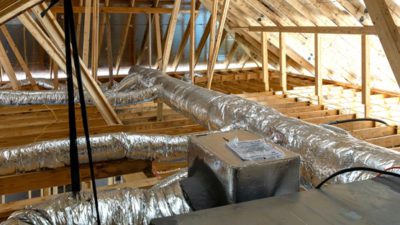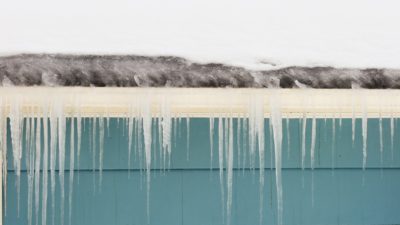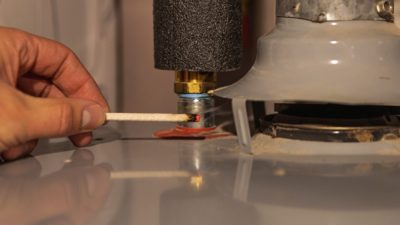When it comes to keeping your home warm in the winter, many assume windows are the worst offenders for heat loss. Even if a homeowner buys the nicest windows on the market, they are always going to feel colder than a wall because of the material of which they are made. Often times, insulating your home is a more cost-effective way to make it feel more comfortable and slash your fuel costs. Insulation takes on a quiet, understated position, yet homeowners in Massachusetts and New York should still recognize its importance. Our guide will help lay out some of the basics about insulation.
What is insulation?
Insulation is a material that can be installed in various areas around the home, most notably in the basement, walls, and attic. There are various types of insulation, which serve different purposes in a home, but all of it works to keep homes warmer in the winter and cooler in the summer.
Cellulose insulation is a popular and eco-friendly choice for many homeowners.
Types of insulation:
Air sealing (or spray foam) is used by HomeWorks Energy crews in a few key areas of homes, including around the perimeter of unfinished basements, and on attic floors. Spray foam prevents air infiltration at the bottom of homes, and air leakage that often occurs at the top of homes.
Fiberglass batting is typically installed at the time the home is built. Batting is generally installed within unfinished walls, floors, and ceilings. Fiberglass insulation also can be used to create pathways in attics when blown-in insulation is being added.
Cellulose insulation, which is partly composed of shredded newspaper, is the material used for blown-in insulation. This insulation can be installed in an existing home, particularly in hard-to-reach places. Cellulose can be installed in an existing wall or in an attic and is an ideal option for those who want to add insulation to their homes in order to improve comfort and reduce their energy costs.
How insulation works:
Spray foam stops air infiltration at the bottom of a house and leakage at the top of a house. Houses operate a little like a chimney, where cold air infiltrates in the basement, warms up in the house, rises, and then escapes out the attic. This phenomenon is called the stack effect, and air sealing helps to prevent the movement of air throughout the house.
Other types of insulation, like fiberglass batting and cellulose, slow the movement of air but don’t stop it completely. Heat moves from warmer areas to cooler areas in a bid to equalize the temperature. Insulation slows that process down, much like throwing on a hat or sweater in the wintertime does for our bodies. The effectiveness of insulation is determined by something called an R-Value, which measures the material’s ability to resist conductive heat flow. The higher the R-Value, the more effective the material is. A qualified home energy specialist can provide more information about the type of insulation that will be best for your home.
Insulation Tips:
It’s helpful to know what type of insulation to use in the different areas of your home. The design of your home and the location where the insulation will be added will impact which type is best for your needs. As an example, if insulation needs to be added to the attic, it likely will be a combination of spray foam and open blown cellulose. Retrofitting walls with insulation is generally done by dense packing the walls with cellulose.
Hire a qualified professional to install the material in your home. Insulation can be a do-it-yourself project, but that doesn’t mean it should be one. The installation plays a major role in its overall effectiveness. For instance, even an experienced contractor may leave gaps when rolling out fiberglass batting in an attic, which reduces the materials overall effectiveness.
Schedule a home energy assessment to learn more about weatherization. During a home energy assessment, an energy specialist is going to identify where the air is infiltrating and leaking from the house. The specialist will provide information about the best ways to improve the comfort and efficiency of a home. It’s the perfect starting point for those who are considering adding insulation.
Your northeastern home likely has some insulation installed, but it may be time to add insulation to certain areas of your home. You might be surprised at what a difference it can make when it comes to maintaining your preferred home temperature and reducing your heating and cooling costs. To learn more about home insulation and to find out if insulation is the right choice for you, contact HomeWorks Energy today to schedule a home energy assessment.





